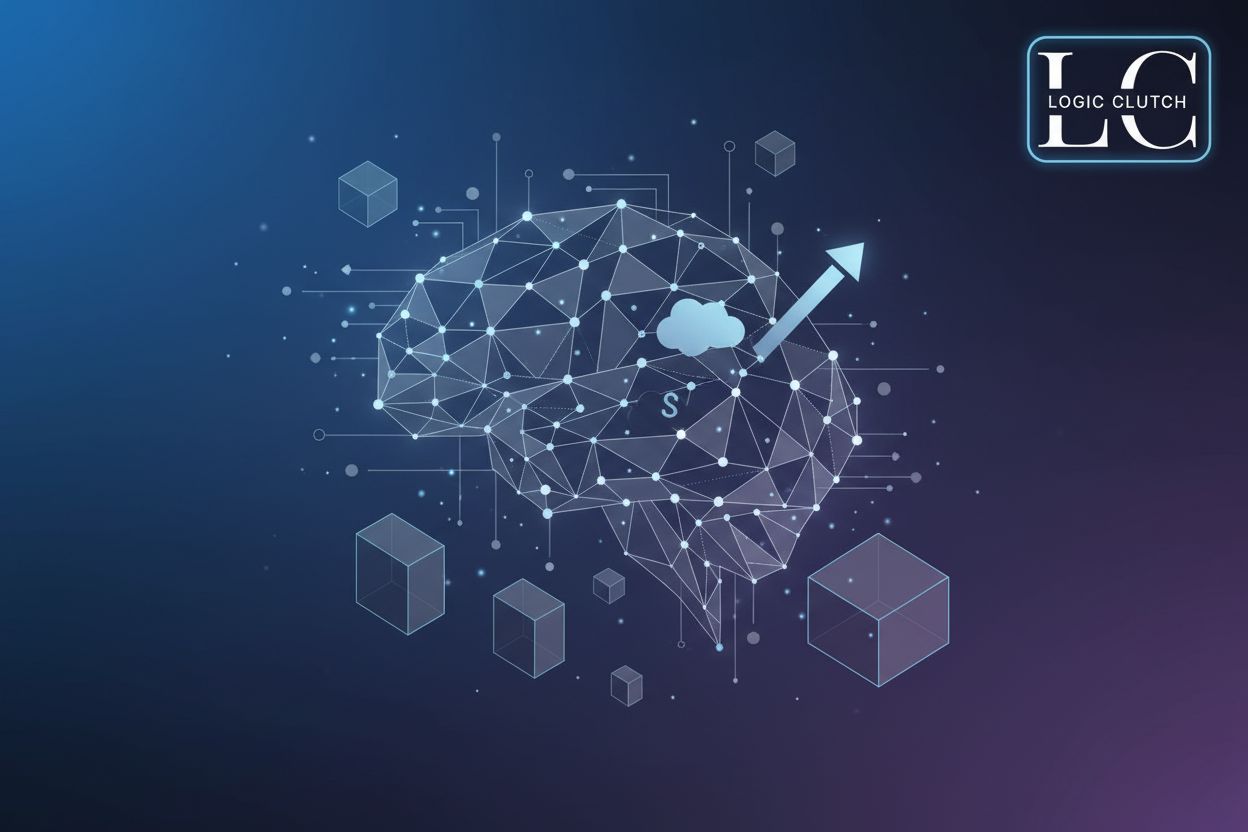Leveraging Big Data Analytics for Business Success
TL;DR
Understanding the Power of Big Data Analytics
Alright, let's dive into big data analytics, shall we? Ever wonder how companies seem to know what you want before you even realize it yourself? It's not mind-reading, trust me.
At its core, big data analytics is all about digging into those huge piles of information to find the juicy bits. I mean, we're talking about examining large datasets to find things you wouldn't normally see.
- Think of it as finding hidden patterns; like, which products really sell together – maybe not the obvious ones!
- It's heavily reliant on machine learning, ai, and predictive modeling. It's not just about what happened, but what's likely to happen.
- Ultimately, it's aligning business strategies with actionable analytics. No more shooting in the dark!
So, what do you need to actually do this big data thing?
- First, you gotta have good data management and solid infrastructure. Like, a space for keep all the data.
- Next, you need the right tools – think of the Hadoop ecosystem, Spark, cloud-based platforms like AWS, Azure, GCP, or BI tools like Tableau and Power BI to crunch all those numbers and turn them into something useful.
- Don't forget data visualization! Gotta make it pretty (and understandable) with charts, graphs, scatter plots, heatmaps, and interactive dashboards.
- And of course, you need to protect data privacy and security. Can't just go willy-nilly with customer info, you know?
According to Leveraging Big Data Analytics: Driving Business Success Through Insightful Data, big data analytics is crucial for organizations to remain competitive. (Why big data analytics is critical for success - Data Science Central)
Now that we've got the basics, let's look at why this is actually good for business.
Benefits of Leveraging Big Data Analytics in Business
Alright, so you're probably wondering how big data analytics actually helps businesses, right? It's more than just a buzzword, trust me.
First off, it's about enhanced decision-making. Instead of relying on gut feelings, you can analyze trends and patterns to make informed calls, aligning them with your goals and what the market actually wants.
Then there's improved customer experiences. Think about tailoring products and services based on what people actually do, not what you think they want. This is about fostering loyalty, satisfaction, and personalized marketing, you know?
And hey, let's not forget increased operational efficiency. Spotting inefficiencies and suggesting ways to improve things? That's where it's at. It reduces costs, optimizes resource allocation, and streamlines core business processes.
Imagine a retail company using ai to predict which items will be popular next season and adjusting their inventory before the rush. Or a finance firm using data to spot fraudulent activity faster than ever before. It's about getting ahead of the curve.
Speaking of efficiency, Leveraging Data Analytics to Boost your Business Success | Altamira notes that data-driven businesses are up to 5% more productive than competitors. (Data-driven companies outperform their competition, ...) That's a real edge.
So, what's next? Let's talk about how this all fits with your customer data.
Big Data Analytics and Salesforce CRM: A Synergistic Approach
Okay, so you're probably thinking, "how does all this big data jazz actually fit with salesforce?" It's a pretty valid question, and honestly, it's where things get really interesting.
Think of Salesforce as your customer hub; it's where all your customer info lives. Now, imagine you could pump even more data into it – like, external data from social media, website activity, or even market trends. That's the power of integrating big data!
- Basically, you're beefing up your Salesforce data with outside sources. This gives you way more context about your customers. For example, a healthcare provider could pull in regional health data to better understand patient needs, or a retailer could analyze local economic trends to optimize inventory.
- The goal? A 360-degree view of the customer. No more guessing what they want. You'll actually know because you've got all the data points in one place.
- this enhanced view helps you improve sales strategies, marketing campaigns, and service interactions. You can tailor offers, personalize communications, and anticipate customer needs before they even ask.
Salesforce Einstein uses ai to analyze all this data and predict future outcomes. (Explain, Predict, and Take Action with Einstein Discovery) I mean, How cool is that?
Now, let's get into the nitty-gritty of making this happen.
Overcoming Challenges in Implementing Big Data Analytics
Okay, so you're all in on big data analytics, but what happens when things get... messy? Trust me; it's not always smooth sailing. Actually, let's dive into some of the more common headaches and how you might just side-step them.
One of the most common struggles is data overload. Like, you're drowning in info but can't find the life raft, you know? It's tough to sort the useful signals from all the noise.
Then there's the whole integration nightmare. Trying to get all this new big data stuff to play nice with your existing systems? Ugh, it can be a real headache. Think of a small hospital trying to merge new patient data streams with their old systems. Not fun.
And don't get me started on data silos. Different departments hoarding their own data like Smaug with his gold. Getting everyone to share? It's a political minefield.
There's a talent crunch in this field. Everyone wants a data scientist, but they're rarer than hen's teeth.
That means you might need to invest in training. Like, sending your current team to data boot camp. Not cheap, but necessary.
Ultimately, it's about building a team that actually gets this stuff. You'll need data engineers to build and maintain the infrastructure, data scientists to develop models, analysts to interpret results, and domain experts who understand the business context.
Data privacy, though? It's a minefield. Gotta make sure you're not running afoul of, you know, all the regulations.
You need to maintain customer trust through data security. Because once that's gone, it's really hard to get back.
That means robust security measures. Firewalls and encryption, the whole nine yards. It’s about protecting your company and your customer’s info.
So, what's next? Let's talk about how ai fits into all of this, especially within Salesforce.
AI within Salesforce: Your Data Scientist in the CRM
Alright, so we've talked about big data and Salesforce, and how they can work together. Now, let's zoom in on a really cool part of that: ai within Salesforce. It's like having a data scientist inside your crm.
Salesforce Einstein is the name of the game here. It's not just about storing data; it's about making that data smart. Einstein uses ai and machine learning to analyze all the information you have in Salesforce – your customer interactions, sales history, service tickets, you name it.
What does that actually mean for you?
- Predictive insights: Einstein can predict things like which leads are most likely to convert, which customers are at risk of churning, or what the best next action is for a sales rep to take. This helps your teams focus their efforts where they'll have the biggest impact.
- Automated tasks: It can automate mundane tasks, like categorizing cases or suggesting relevant articles to customers, freeing up your people to do more strategic work.
- Personalized experiences: By understanding customer behavior and preferences, Einstein helps you deliver more personalized recommendations and communications, both for your customers and your internal teams.
Basically, it turns your CRM from a data repository into an intelligent assistant that helps you sell smarter, serve better, and market more effectively.
Now that we've covered how AI enhances Salesforce, let's see how this is transforming industries.
Transforming Industries: Real-World Examples
Alright, so you're probably wondering if big data analytics is actually changing how industries operate, right? Spoiler alert: it totally is. It's not just about collecting data; it's about turning that data into something useful, something that can drive real change.
In finance, big data analytics is used for all sorts of things, like identifying fraudulent activities and assessing credit risks. Instead of relying on gut feelings, firms are using ai to spot suspicious transactions and predict who's likely to default on a loan.
Personalizing banking experiences is another big one. Banks are using data to understand customer preferences and tailor their services accordingly, which could mean anything from suggesting relevant products to offering personalized investment advice.
The end goal? Better risk management strategies. By analyzing market trends and customer behavior, financial institutions can make more informed decisions about lending and investment, which means less risk and more profit.
In manufacturing, big data analytics is all about keeping things running smoothly, it facilitates predictive maintenance and quality control. Think about it: sensors on machines constantly feeding data back to a central system, which analyzes it to predict when a machine might break down.
The result? Reduced downtime and lower production costs. If you can fix a machine before it breaks, you're gonna save a ton of money.
It starts with analyzing data from sensors and machines. That data can be used to identify patterns and trends that might indicate a problem, so you can take action before it's too late.
The retail and e-commerce industries are all about understanding customers, that's why they're tracking customer interactions across various touchpoints, from social media to online purchases. This gives them a comprehensive view of the customer journey and allows them to personalize the experience.
Enhanced marketing strategies and personalized experiences are key here. By understanding customer preferences and behaviors, retailers can create targeted marketing campaigns that resonate with specific audiences.
Optimizing supply chain operations and dynamic pricing models is another big one. Retailers are using data to predict demand, optimize inventory levels, and adjust prices in real-time, which means less waste and more profit.
As we move forward, it’s clear that big data analytics is not just a trend, it’s a fundamental shift in how businesses operate. Let's look at what's coming next.
Future Trends in Big Data Analytics
Ain't it wild how much data is out there these days? It's like, what are we even gonna do with it all? Well, buckle up, because the future of big data analytics is looking pretty interesting.
One thing to watch is augmented analytics. This is where ai and machine learning steps in to automate things like data prep and finding insights. It's about making analytics easier for everyone, not just data scientists. "Augmented" means it's helping humans do their jobs better and faster, rather than replacing them entirely. It empowers non-technical users to explore data and uncover insights they might otherwise miss.
Then there's edge computing. Instead of sending everything to the cloud, you process data closer to where it's collected. Think faster real-time analytics.
And finally, data democratization. Forget data silos, we're talking about making data insights available across departments. It's about empowering everyone to use data as a key asset.
So, how does this shape up in the real world? Well, imagine it's easier for a small business to get the same insights as a fortune 500 company.
Now, before you jump in, let's cover some important planning steps.
Strategic Considerations for Implementing Big Data Analytics
Strategic considerations? Okay, it's not just about throwing money at the shiniest new analytics platform and hoping for the best. You know? There's a bit more to it than that.
First, you gotta figure out your why. What are you trying to achieve with all this fancy data crunching? I mean, are we talking about boosting sales, cutting costs, or maybe just getting a better handle on what your customers actually want?
- It's not enough to say "we want to be data-driven." You need specific, measurable goals. Like, "increase customer retention by 15% in the next quarter," "reduce operational costs by 10% through optimized supply chain management," "improve product development cycles by 20%," or "increase customer satisfaction scores by 5 points." You get the idea?
- And it can't be some rogue project that no one else cares about. It needs to tie back to the bigger picture. Aligning your analytics initiatives with the overall company strategy is key.
Okay, so you've got your objectives nailed down—great! But what about the people?
- Data-driven decision-making needs to be more than just a buzzword; it has to be part of the company's dna. That means encouraging everyone to use data to back up their ideas and decisions and also to feel like they can contribute.
- Break down those data silos and get teams collaborating. Marketing needs to talk to sales, sales need to talk to product development, and so on. Share those insights, people!
A collaborative environment, where data insights are valued, is essential to embed analytics into the company's DNA.
In short, big data analytics isn't just a tech thing; it's a people thing. Get those objectives straight, get everyone on board, and you're way more likely to actually see some real results.






